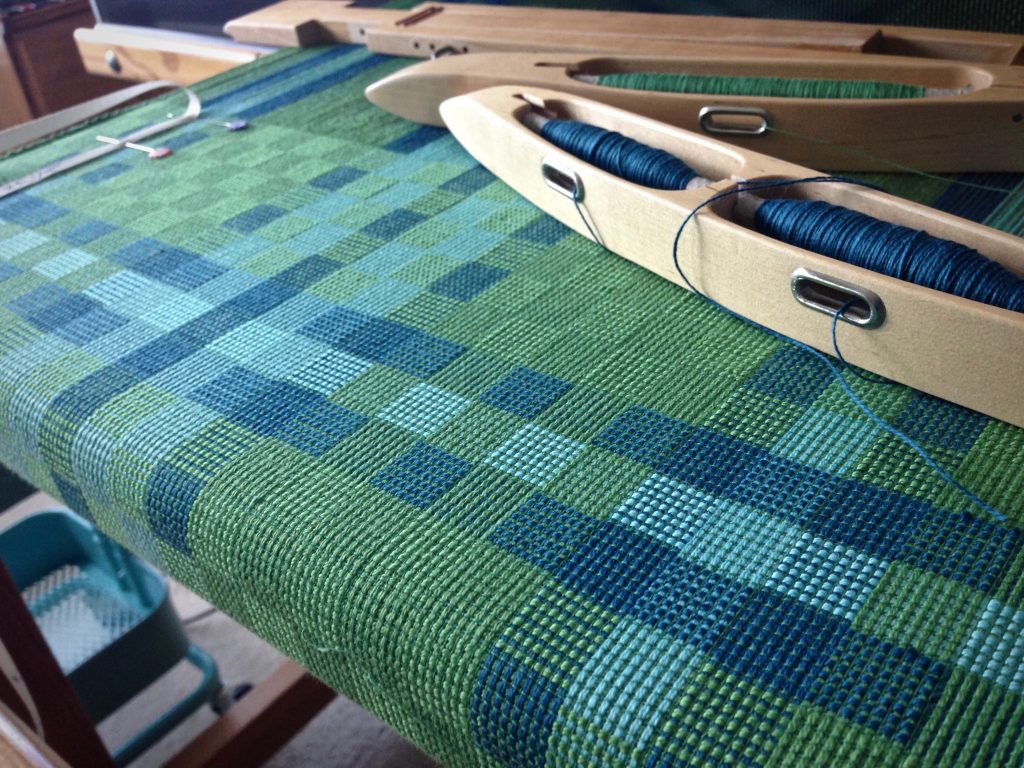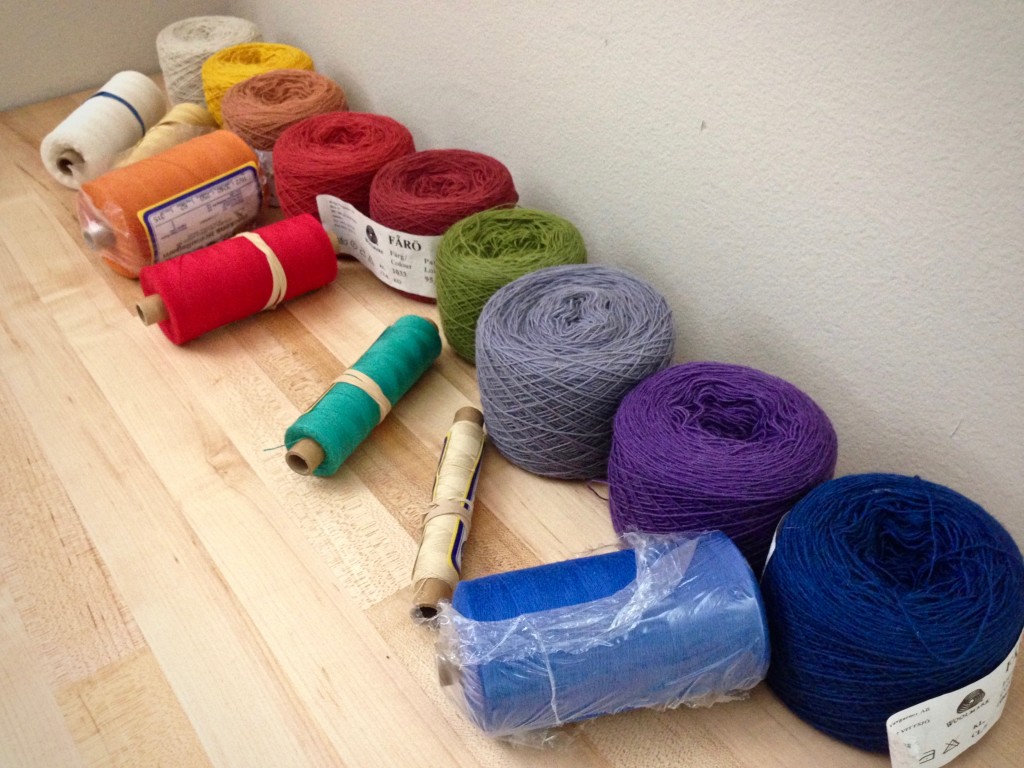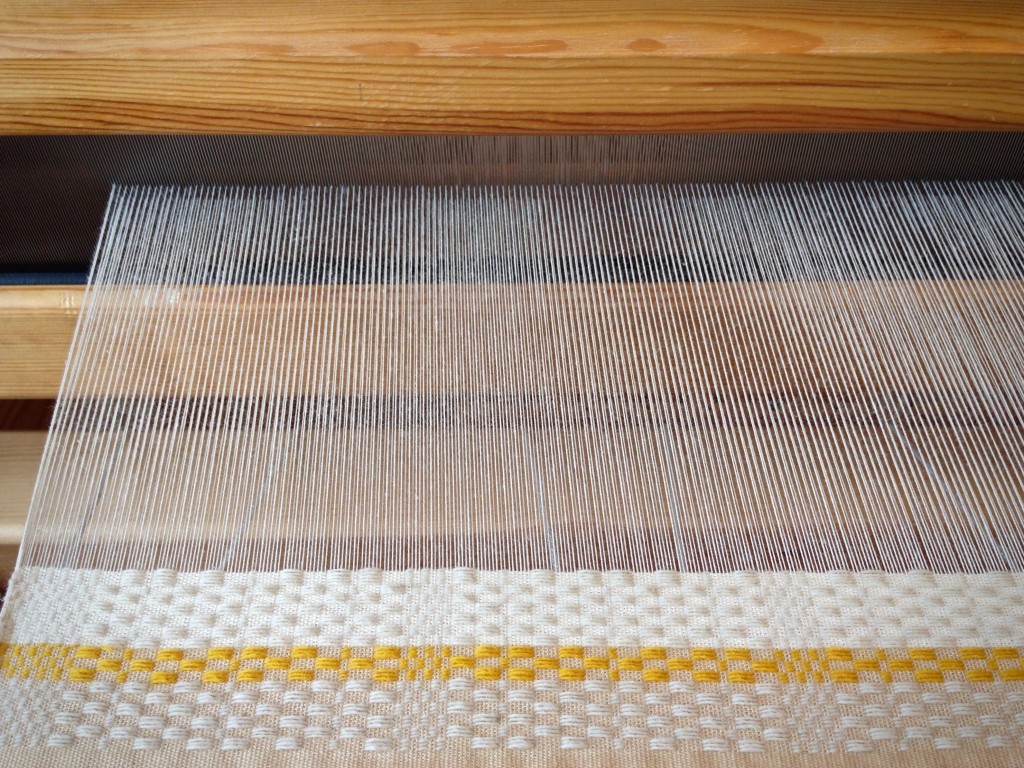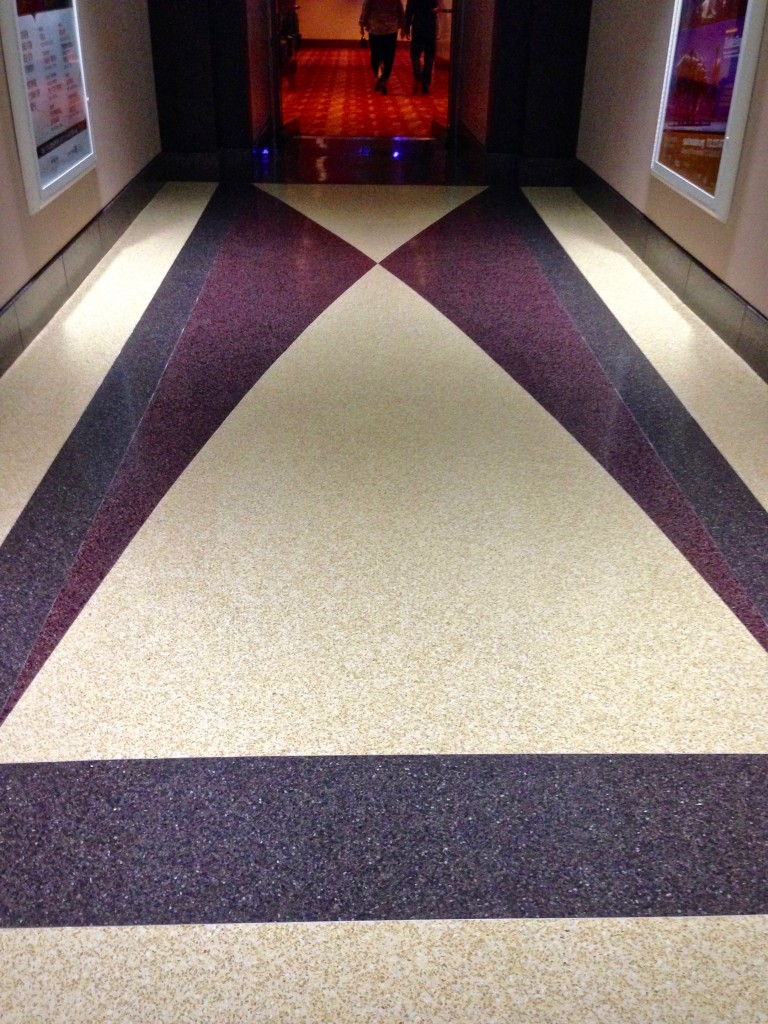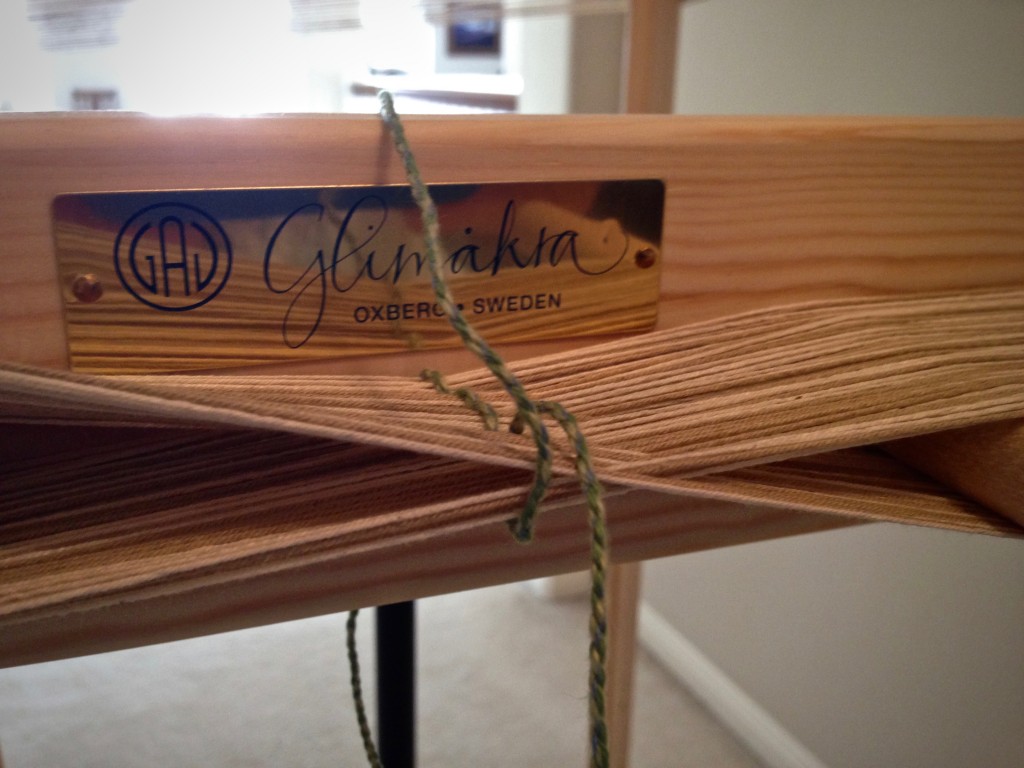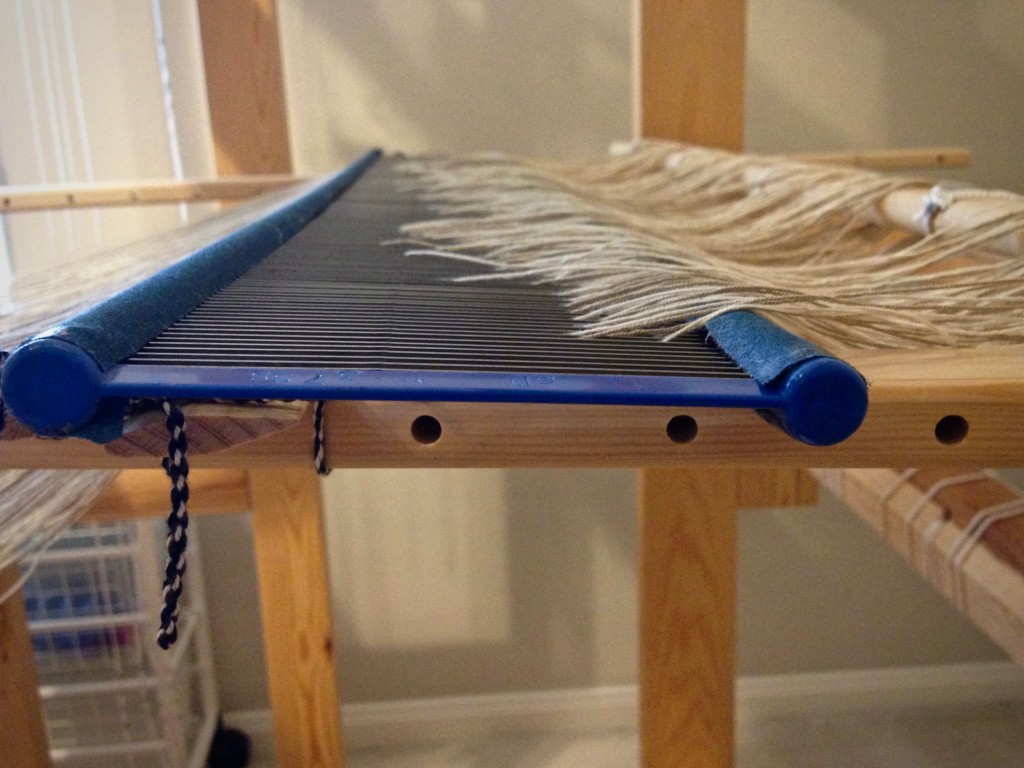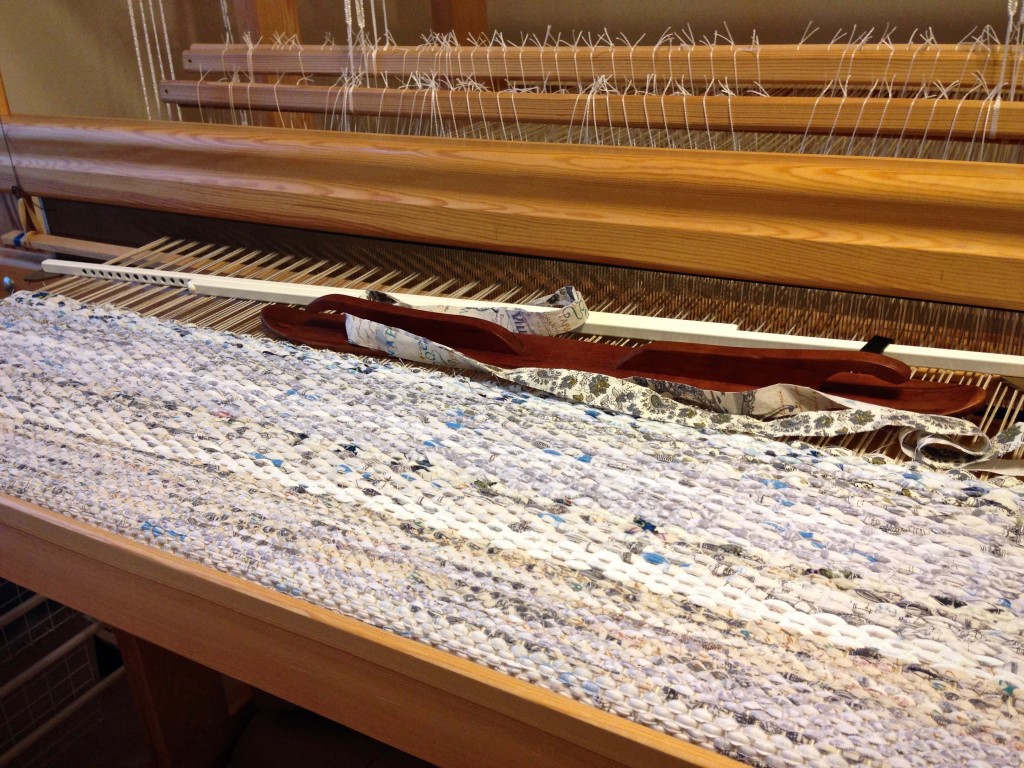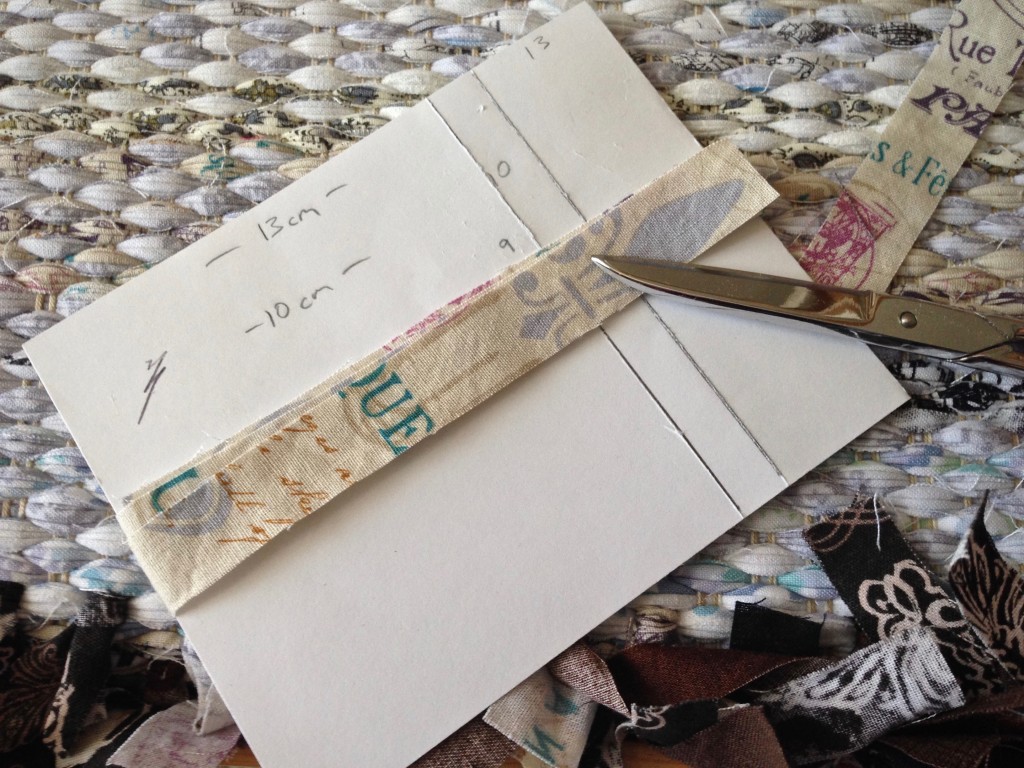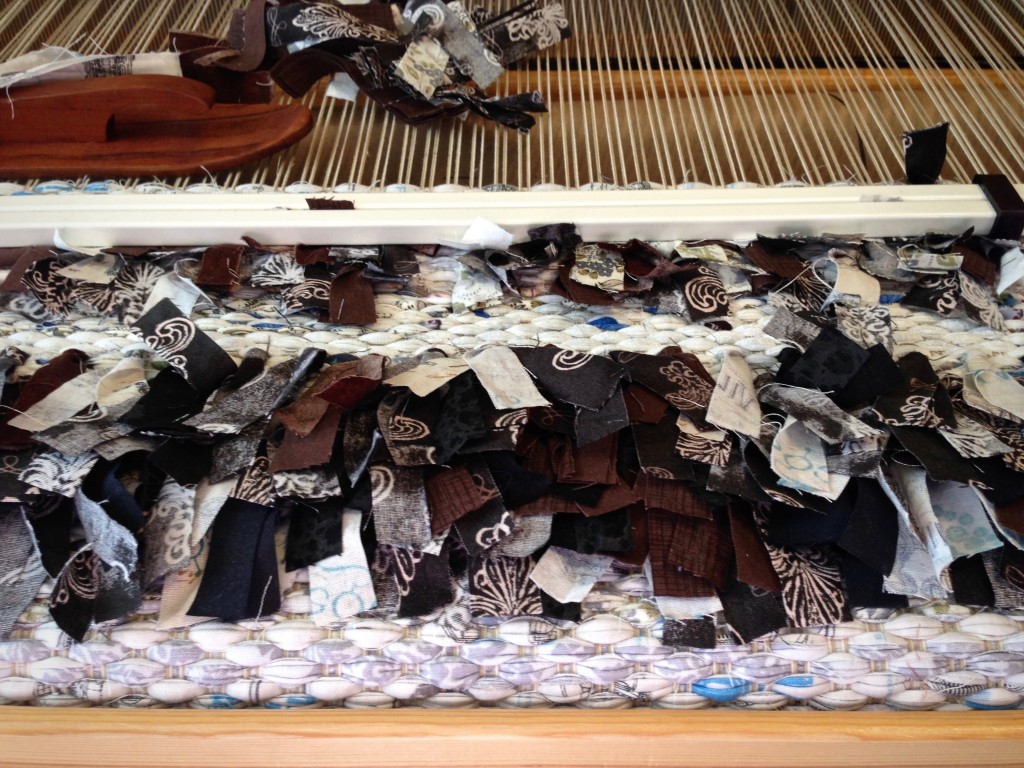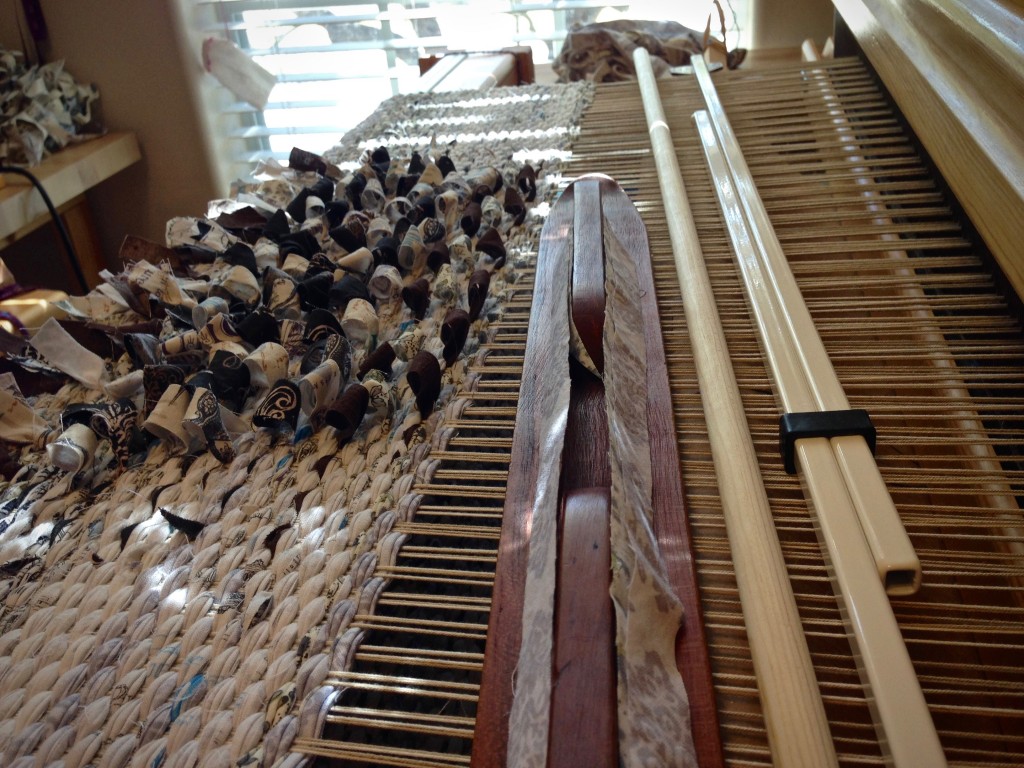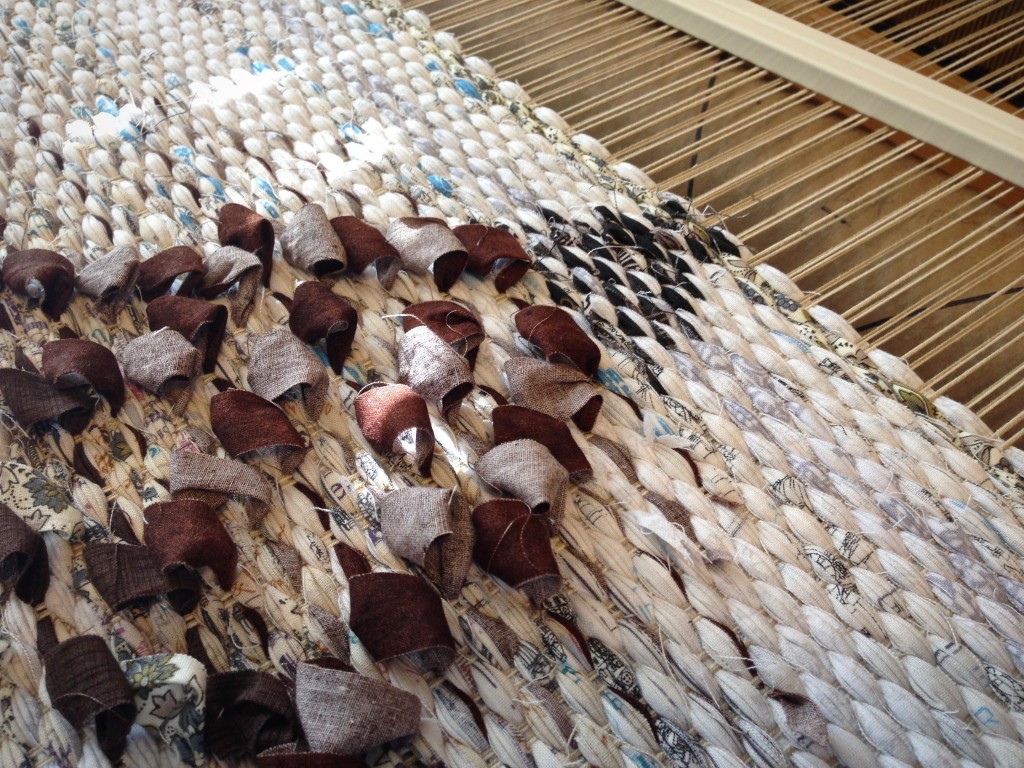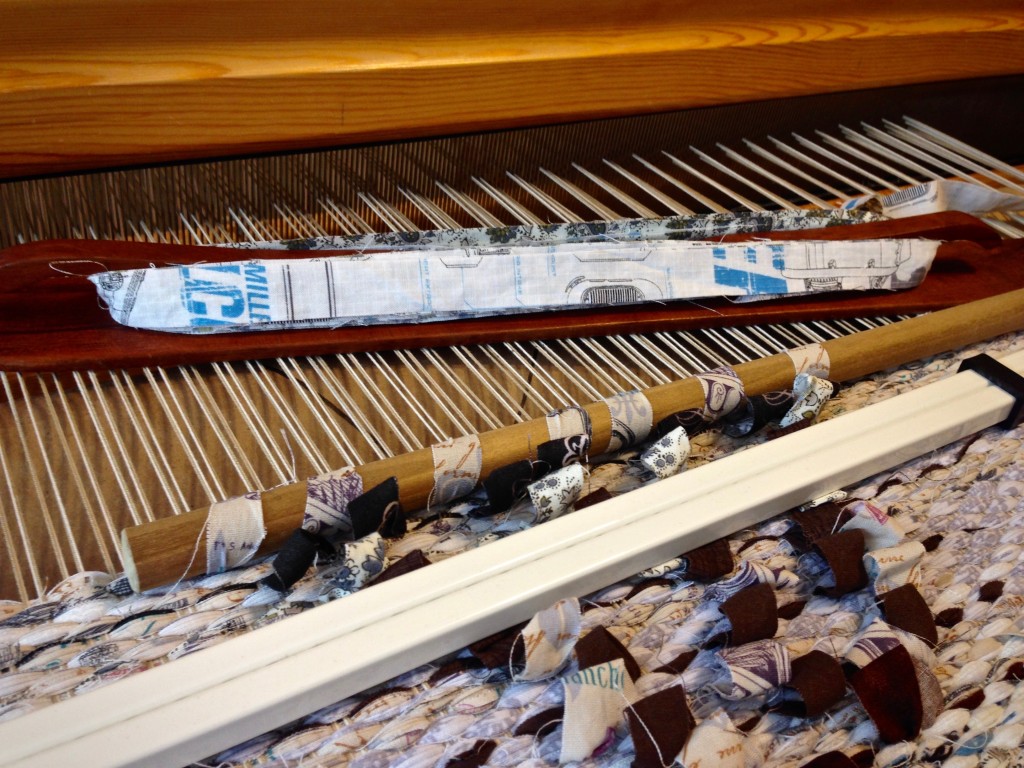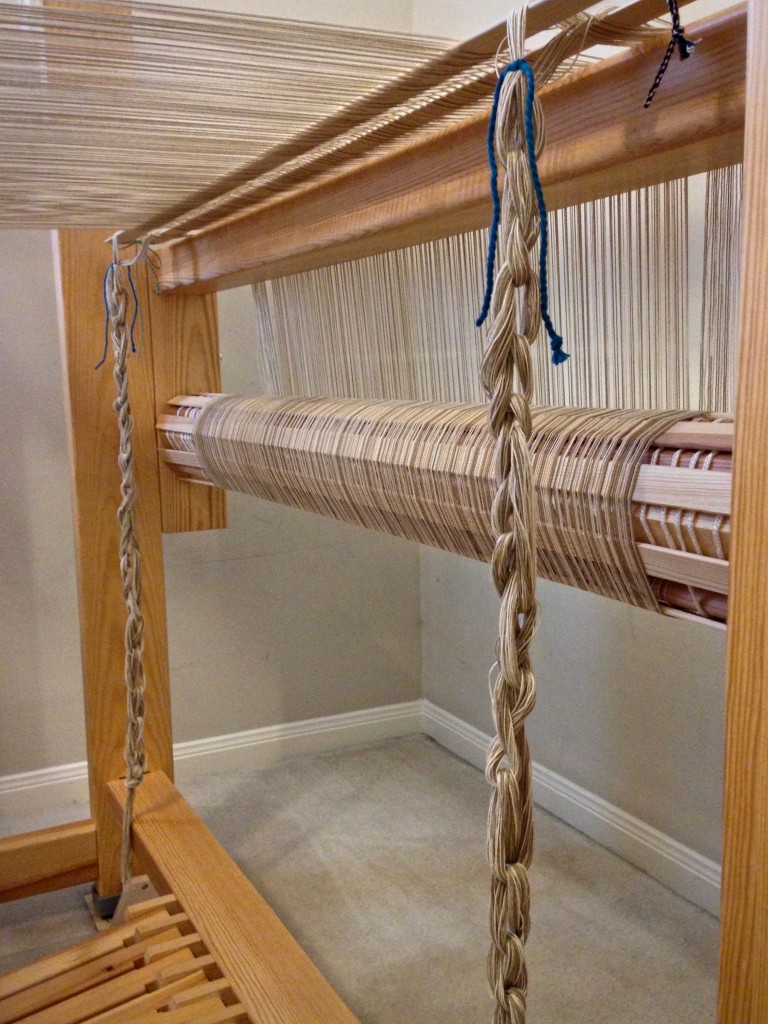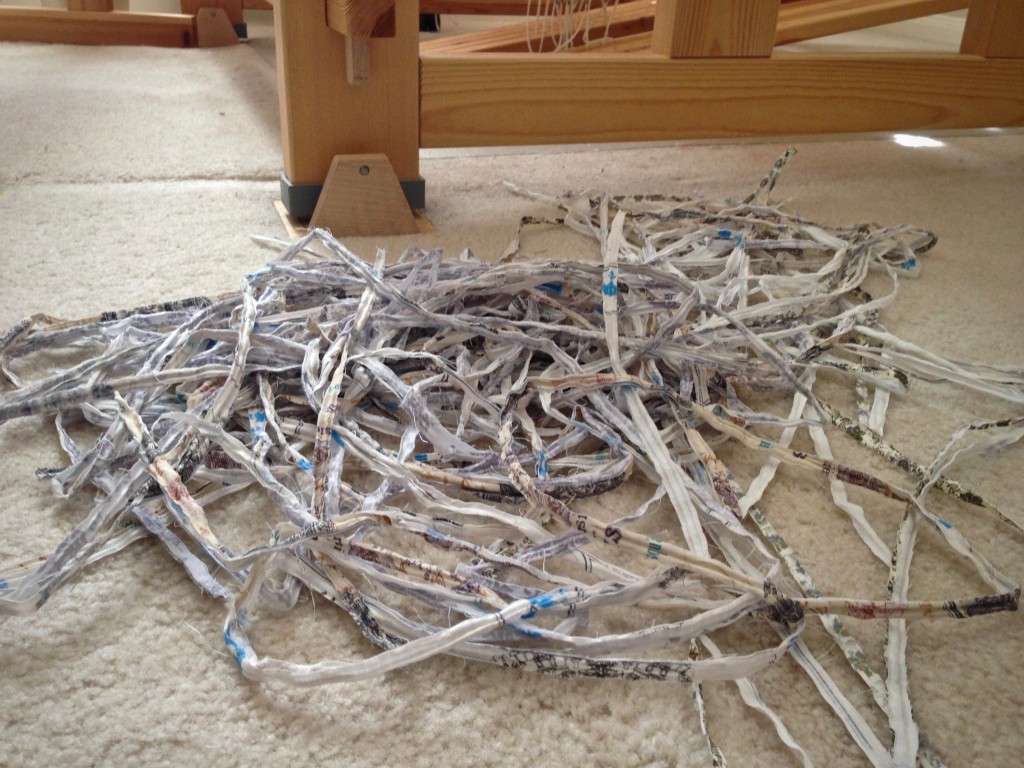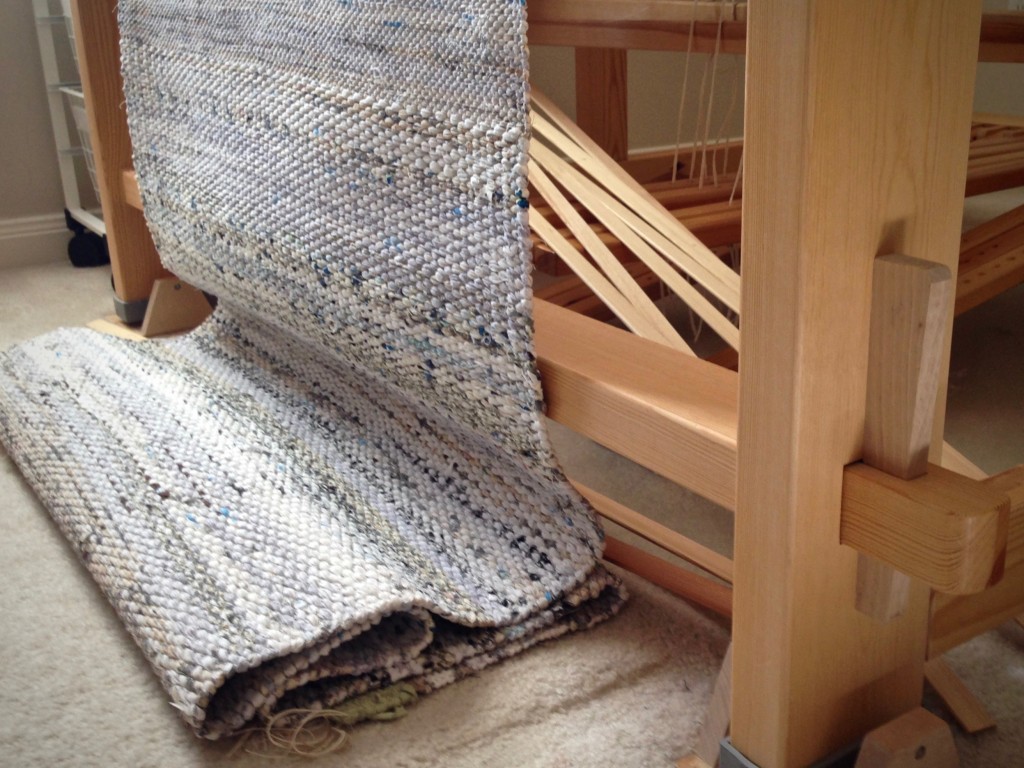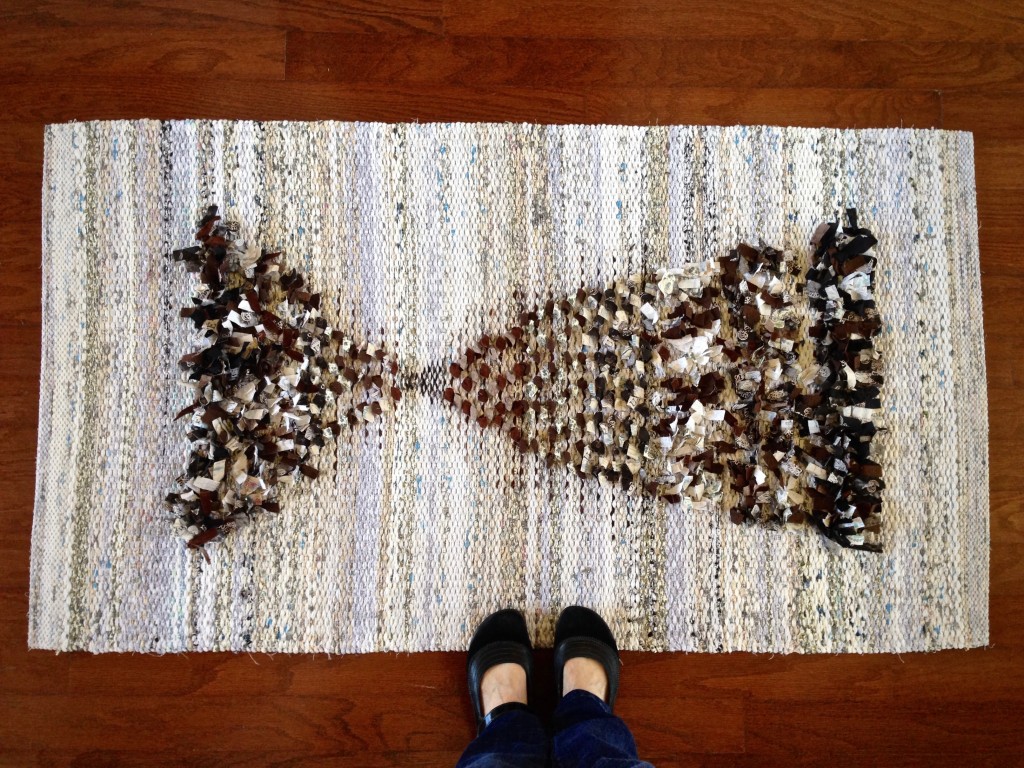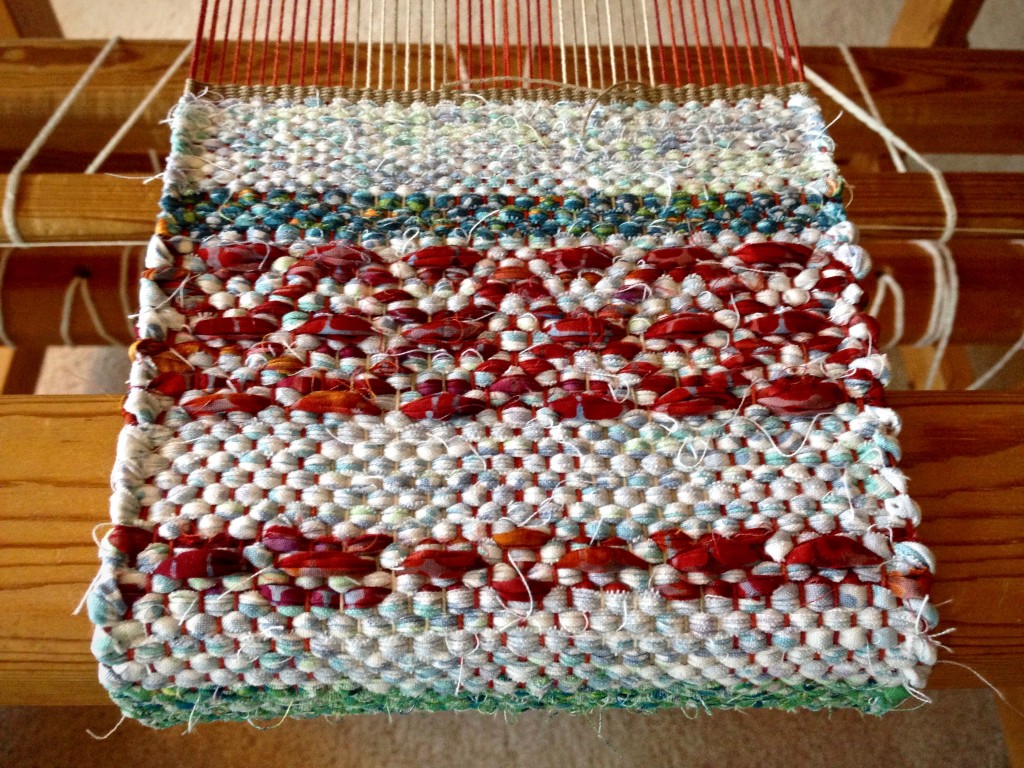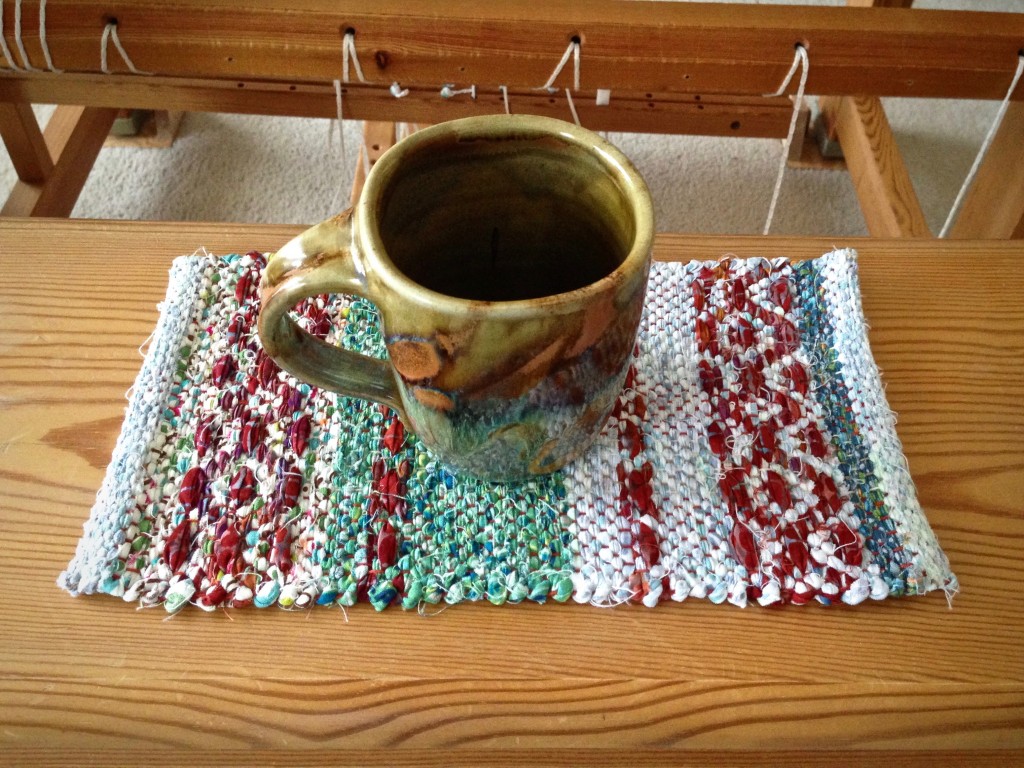For the most part, I am designing this monksbelt at the loom. Even so, I have guidelines regarding color order, sequence of tabby and pattern colors, and treadling order. Each time I remove the temple, I make mental notes for the upcoming segment. When I advance the warp, I step back to get a better idea of where I’ve been, and where I want to go.
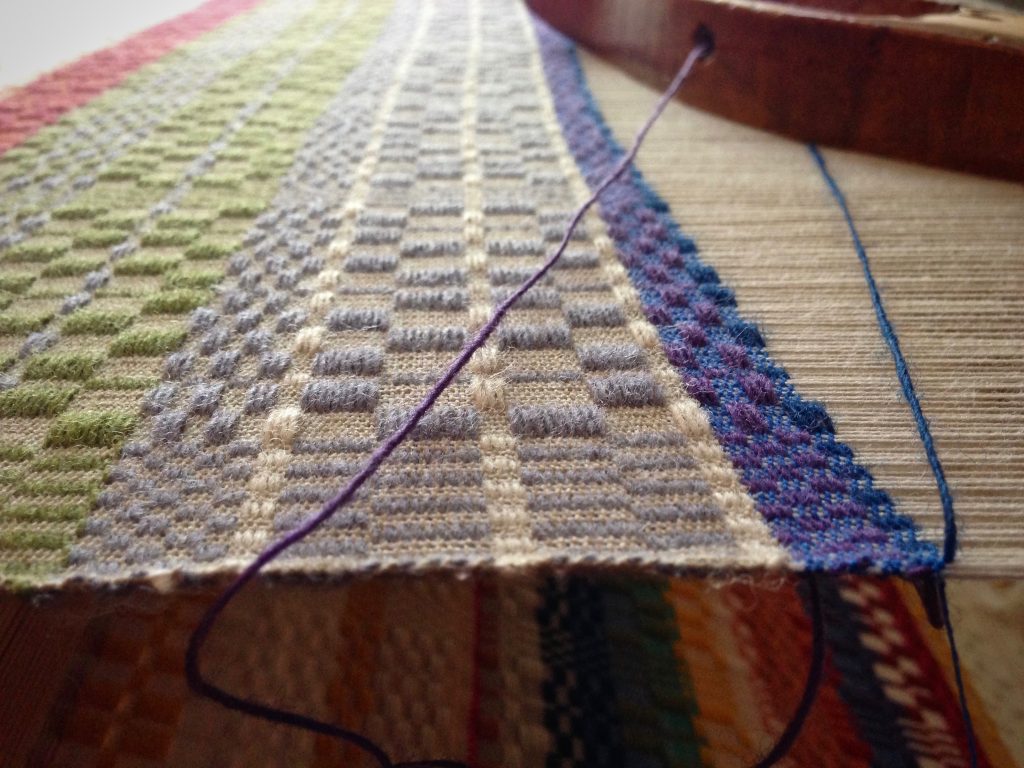
The challenging part is the weft rep tabby. I make a high arch with the tabby weft, and change sheds before beating the weft in. Inconsistency shows up as streaks, especially with darker weft, like the blue tabby I’m on now. When it seems like too much effort to get it right, I have to remember that I am not just making yardage; I am developing skills and habits for successful weaving.
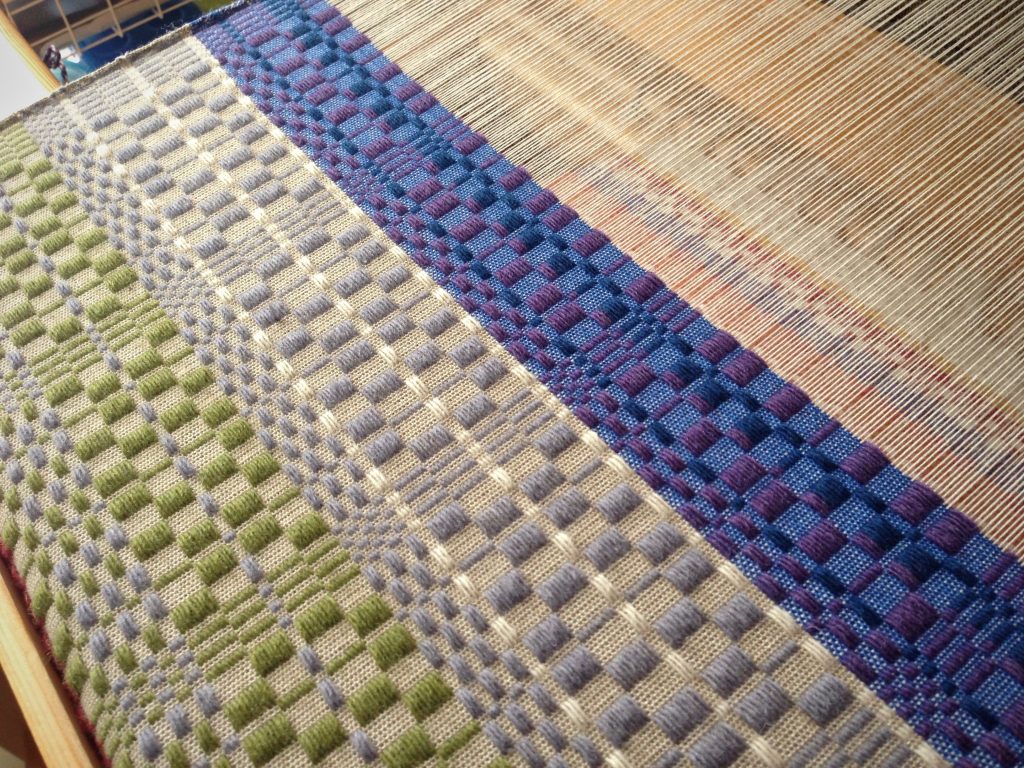
It takes planning and caring to build a home. It takes wisdom. Homes are built with wisdom. It’s like designing at the loom. We can’t see into the future, but we can set guidelines that help us make a good design. There is always a challenging part, in every stage. All the more reason for consistency in our convictions. Home is not just a place. Home is where we learn to love.
May your home be your family’s favorite place.
Designing,
Karen

